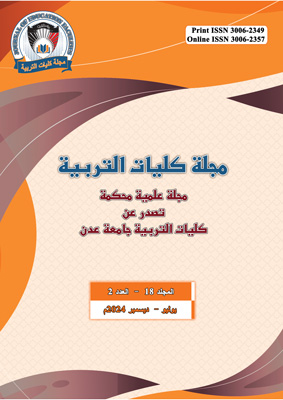ترجمة التعابير السخرية والتهكم في رواية هيمنجواي ( لمن تقرع الاجراس) "دراسة تحليلية تقييمية"
DOI:
https://doi.org/10.47372/jef.(2024)18.2.73الكلمات المفتاحية:
لغة المصدر، اللغة المستهدفة، الترجمة الحرفيةالملخص
تهدف هذه الدراسة إلى الوقوف على السخرية والتهكم في ترجمة رواية "لمن تقرع الأجراس" إلى العربية. وسرد التعبيرات التي يصوّرها الكاتب في الرواية. كما تهدف الى دراسة التعبيرات والاستراتيجيات التي تم توظيفها واستخدامها من قبل المترجم لتصوير السخرية والتهكم ، والمشاكل التي قد تنشأ أثناء ترجمتها قامت الدراسة بمسح عينة عشوائية مكونة من 57 تعبيرًا متعلق بالسخرية والتهكم واستعانت الدراسة بالإطار النظري لعلماء شهيرين في مجال الترجمة مثل نيومارك، فيني وداربلني وفينوتي. أظهرت الدراسة أن المترجم قد اعتمد بنجاح إجراءات نيومارك وفيناي وداربلنيه وفينيت في نقل تعابير السخرية والتهكم إلى العربية . توصل الباحث الى أن المترجم اعتمد تقنيات نيومارك، فيني وداربلني وفينوتي بشكل شامل وناجح اثناء الترجمة. كما استخدم المترجم استراتيجيات أخرى مثل الترجمة الحرفية والحذف وغيرها،. واستخدمت الترجمة الحرفية وثبت أنها استراتيجية مثمرة في ترجمة تعابير السخرية والتهكم إلى العربية، خاصة مع وجود تأثير أقل للصورة في التعبير.. ووجدت الدراسة أنه تم الاحتفاظ بترجمة الصورة الساخرة والتهكمية بشكل كبير، و تمت مواجهة بعض المشاكل خلال التحليل مثل بعض الإضافات الغير ضرورية. فتمت دراسة هذه المشاكل من منظور اجتماعي لنفذ الترجمة ووجد ان هذه المشاكل كانت نتيجة لاختلافات ثقافية بين اللغتين الإنجليزية والعربية كشفت الدراسة أن استراتيجيات الترجمة الحرفية والإضافة تم استخدامها بشكل كبير في نقل و ترجمة هذه التوقعات. أوصت الدراسة بما يلي:
1. يمكن دراسة السخرية والتهكم من منظور نفسي.
2. يمكن إجراء دراسة لاستقصاء آراء دراسات الترجمة حول ترجمة الألفاظ البذيئة واللغة العامية في هذه الرواية.
التنزيلات
منشور
كيفية الاقتباس
إصدار
القسم
الرخصة
الحقوق الفكرية (c) 2025 مجلة كليات التربية - جامعة عدن

هذا العمل مرخص بموجب Creative Commons Attribution-NonCommercial 4.0 International License.

